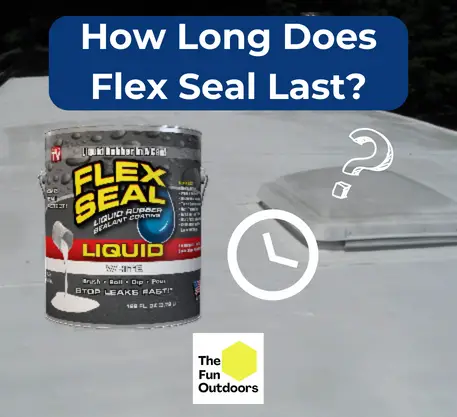Flex Seal is a popular product that has been gaining traction in recent years. It is a versatile sealant that can be used on various surfaces, including wood, concrete, glass, fabric, plastic, and rubber. But how long does Flex Seal last?
Flex seal can last three or more years when applied correctly without cracking, peeling, or losing its sealing properties, but is not designed to handle pressure or high heat.
Understanding the factors that affect how long Flex Seal lasts is crucial to ensure that you get the most out of the product. In this article, we will explore the different factors that affect the longevity of Flex Seal, the materials suitable for Flex Seal, and how to maintain and care for the product. We will also answer some frequently asked questions about Flex Seal and provide some health and safety precautions when using the product.
Key Takeaways
- Flex Seal can last for years without cracking, peeling, or losing its sealing properties when applied correctly.
- Several factors can affect how long Flex Seal lasts, including the surface it is applied on, the weather conditions, and how it is stored.
- Understanding the materials suitable for Flex Seal, how to maintain and care for the product, and some health and safety precautions is crucial to ensure that you get the most out of the product.
How Long Does Flex Seal Last?
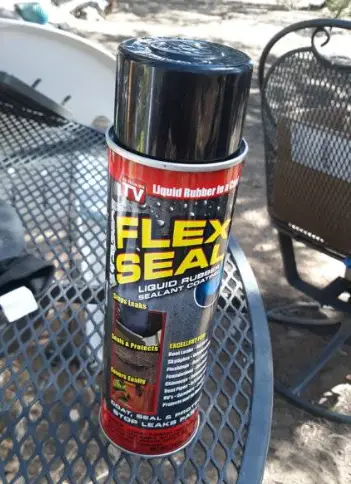
Flex Seal is a popular rubberized coating that can be used for a variety of repairs and protection. It is known for its durability and flexibility, making it an ideal solution for sealing leaks and cracks. But how long does Flex Seal actually last?
According to Flex Seal, when applied correctly, the product can last for 3 years or more without cracking, peeling, or losing any of its strength or sealing properties. Many RV owners have reported that their Flex Seal application is still like-new even after a few years. This makes it a popular choice for RV roof repairs.
The longevity of Flex Seal depends on various factors, such as the surface it is applied to, the application method, and the weather conditions in the area. In general, Flex Seal can last for up to three years or even longer if applied correctly and stored properly.
It is important to note that Flex Seal has a shelf life of 24 months when stored properly. If the container is left open, skin can form on the surface, which can affect the product’s effectiveness. To avoid this, it is recommended to use the product immediately after opening and always replace the lid tightly.
Factors That Affect How Long Flex Seal Lasts
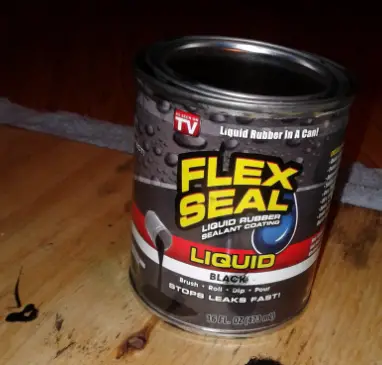
When it comes to determining the longevity of Flex Seal, there are several factors that come into play. Proper application, temperature, moisture and humidity, surface texture and quality, and the thickness of the coating are all important factors that can affect how long Flex Seal lasts.
Proper Application
Proper application is crucial for the longevity of Flex Seal. When applying the product, it is essential to follow the instructions provided by the manufacturer. The surface being coated should be clean, dry, and free of any debris or contaminants. Additionally, the product should be applied in thin, even coats to ensure proper adhesion and coverage.
Temperature It’s Applied and Used In
The temperature at which Flex Seal is applied and used can also affect its longevity. The product should be applied at temperatures between 60°F and 90°F, and the surface being coated should be at a similar temperature. Extreme temperatures can cause the product to crack or peel, reducing its effectiveness.
Moisture and Humidity
Moisture and humidity can also impact how long Flex Seal lasts. If the surface being coated is damp or wet, the product may not adhere properly and can peel or crack over time. Additionally, high levels of humidity can cause the product to take longer to dry, which can also affect its durability and strength.
Surface Texture and Quality
The texture and quality of the surface being coated can also impact the longevity of Flex Seal. Rough or uneven surfaces may not allow for proper adhesion, which can cause the product to peel or crack over time. Additionally, surfaces that are porous or have a low-quality finish may not provide a strong enough bond for the product to last, or will require more coats to get the job done.
Thickness Of Coating
The thickness of the coating is another important factor to consider when determining how long Flex Seal will last. Applying the product in thin, even coats will ensure proper coverage and adhesion, which will increase its longevity. Conversely, applying the product too thickly can cause it to crack or peel over time.
Cleanliness of Surface It’s Applied To
Finally, the cleanliness of the surface being coated is essential for the longevity of Flex Seal. Any debris or contaminants on the surface can prevent proper adhesion. Tthoroughly clean and prepare the surface before applying Flex Seal to ensure maximum effectiveness.
Understanding Flex Seal
Flex Seal is a popular brand of rubberized sealant that comes in various forms, including spray, liquid, and adhesive. It is designed to seal leaks and cracks on a wide range of surfaces, including roofs, gutters, pipes, and even boats and RVs.
The product is known for its versatility and ease of use. It can be applied on wet or dry surfaces and can be painted over once it dries. Flex Seal products are also resistant to extreme temperatures, making them suitable for both indoor and outdoor use.
Flex Seal spray is one of the most popular products in the line. It is a liquid rubber that can be sprayed onto surfaces to create a waterproof barrier. The spray can be used on a variety of surfaces, including metal, wood, concrete, and more.
Flex Seal liquid is another popular product that comes in a can. It is a thick, rubberized sealant that can be brushed or rolled onto surfaces. The liquid can be used to seal leaks and cracks on roofs, gutters, and more.
Flex Shot is a product that is designed for precise application. It is a thick, rubberized sealant that can be dispensed from a tube. It is ideal for sealing small cracks and gaps around windows, doors, and other areas.
Flex Tape is a strong, waterproof tape that can be used to patch holes and cracks on a variety of surfaces. It can be used on metal, wood, plastic, and more. The tape is designed to be extra strong and durable, making it suitable for both indoor and outdoor use.
Flex Glue is a strong, waterproof adhesive that can be used to bond a variety of surfaces. It can be used on metal, wood, plastic, and more. The adhesive is designed to be extra strong and durable, making it suitable for both indoor and outdoor use..
Application of Flex Seal
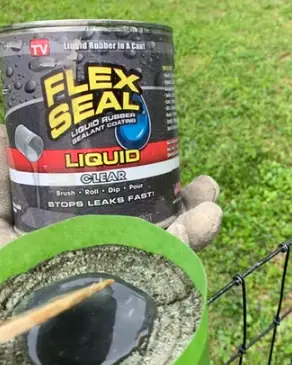
When it comes to applying Flex Seal, the process is relatively straightforward. It is important to prepare the surface before application to ensure the best results.
First, the surface needs to be clean and dry. Any dirt, dust, or debris should be removed to ensure proper adhesion. For wet surfaces, it is recommended to dry the surface before applying Flex Seal.
Next, the can of Flex Seal should be shaken well before use. Hold the can approximately 8-12 inches away from the surface and spray in a sweeping motion. It is recommended to apply multiple thin layers rather than one thick layer to ensure even coverage and proper adhesion.
For larger holes or cracks, it is recommended to apply multiple layers, allowing each layer to dry before applying the next. It is also recommended to apply a top coat of Flex Seal to seal any cracks or gaps in the surface.
After application, Flex Seal takes approximately 2-3 hours to dry to the touch and 24 hours to cure fully. It is important to note that the drying time may vary depending on the temperature, humidity, and thickness of the coating.
Materials Suitable for Flex Seal
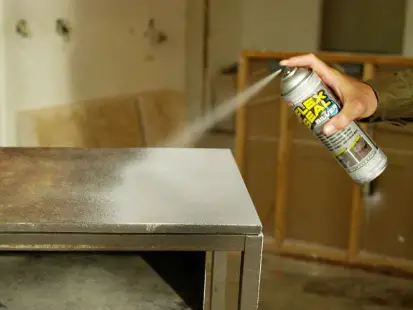
Flex Seal is a versatile sealant that can be used on a wide range of surfaces. It is ideal for fixing leaks, cracks, and holes in various materials. Here are some materials that Flex Seal is suitable for:
Metal
Flex Seal works well on metal surfaces, including roofs, gutters, boats, and RVs. It can help fix leaks and cracks in metal surfaces, restoring them to their original condition. Flex Seal’s waterproof and weather-resistant properties make it an excellent choice for metal surfaces that are exposed to the elements.
Concrete
Flex Seal can be used on concrete surfaces to fix cracks and leaks. It is an excellent choice for repairing concrete driveways, patios, and sidewalks. Flex Seal’s durable properties make it a long-lasting solution for concrete surfaces that are exposed to the elements.
Wood
Flex Seal is suitable for use on wood surfaces, including decks, fences, and furniture. It can help fix leaks and cracks in wood surfaces, protecting them from water damage. Flex Seal’s waterproof properties make it an excellent choice for wood surfaces that are exposed to the elements.
Plastic and Vinyl
Flex Seal can be used on plastic and vinyl surfaces, including PVC pipes and vinyl siding. It can help fix leaks and cracks in these surfaces, providing a long-lasting solution. Flex Seal’s adhesive properties make it an excellent choice for plastic and vinyl surfaces that are exposed to the elements.
Tile and Porcelain
Flex Seal can be used on tile and porcelain surfaces, including bathroom and kitchen tiles. It can help fix leaks and cracks in these surfaces, providing a long-lasting solution. Flex Seal’s waterproof properties make it an excellent choice for tile and porcelain surfaces that are exposed to water.
Masonry
Flex Seal can be used on masonry surfaces, including brick and stone. It can help fix leaks and cracks in these surfaces, providing a long-lasting solution. Flex Seal’s durable properties make it an excellent choice for masonry surfaces that are exposed to the elements.
Fabric
Flex Seal can be used on fabric surfaces, including tents and tarps. It can help fix leaks and tears in these surfaces, providing a long-lasting solution. Flex Seal’s waterproof properties make it an excellent choice for fabric surfaces that are exposed to the elements.
Drywall
Flex Seal can be used on drywall surfaces to fix cracks and holes. It is an excellent choice for repairing drywall surfaces that are exposed to the elements. Flex Seal’s durable properties make it a long-lasting solution for drywall surfaces that are exposed to the elements.
Flex Seal in Different Weather Conditions
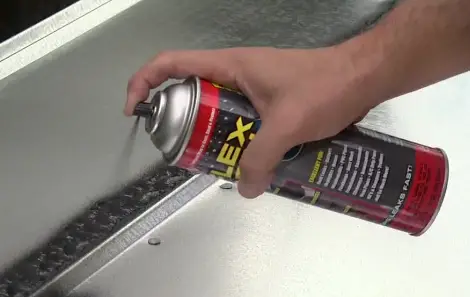
Flex Seal is known for its ability to seal and protect surfaces from leaks and damage. But how does it perform in different weather conditions? Let’s take a closer look.
Waterproof and Weather Resistant
Flex Seal is waterproof and weather resistant, making it ideal for use in different weather conditions. It can withstand rain, snow, and extreme temperatures ranging from -20°F to 140°F. This means that it can be used both in cold winter months and hot summer days.
Cold Weather
In cold weather, Flex Seal may take longer to dry. It is recommended to use it in temperatures above 32°F for optimal results. When applying Flex Seal in cold weather, it is important to keep the can warm and shake it well before use.
Hot Weather
In hot weather, Flex Seal may dry faster than usual. It is recommended to apply it in temperatures below 120°F for best results. When using Flex Seal in hot weather, it is important to avoid direct sunlight and apply it in a well-ventilated area.
Humidity
Flex Seal can be used in humid conditions, but it may take longer to dry. It is recommended to use it in humidity levels below 80% for optimal results. When using Flex Seal in humid conditions, it is important to ensure that the surface is dry and clean before application.
Snow and Rain
Flex Seal is waterproof and can withstand snow and rain. It can be used to seal leaks in roofs, gutters, and other surfaces that are exposed to the elements. When using Flex Seal in wet conditions, it is important to ensure that the surface is dry and clean before application..
Maintenance and Care of Flex Seal
Flex Seal is a durable and long-lasting sealant that can protect surfaces from the elements. However, proper maintenance and care are necessary to ensure that it lasts as long as possible.
One of the best ways to maintain Flex Seal is to protect it from direct sunlight and extreme temperatures. Exposure to these elements can cause the sealant to break down and lose its effectiveness. It is also important to keep the sealed surface clean and dry to prevent mold and mildew growth, which can compromise the seal.
Another important aspect of maintenance is to ensure that the sealant is applied to the correct thickness. Applying too little or too much can affect the seal’s durability and effectiveness. It is recommended to follow the manufacturer’s instructions carefully and apply multiple coats if necessary.
If the sealed surface needs to be painted, it is important to wait for the Flex Seal to dry completely before applying paint. This will ensure that the paint adheres properly and does not compromise the seal.
In moist and humid environments, it is especially important to maintain and care for the sealant. These conditions can affect the seal’s adhesion and cause it to break down over time. Regular inspections and touch-ups may be necessary to ensure that the seal remains intact.
Special Features of Flex Seal
Flex Seal is a versatile and easy-to-use product that can be used for a variety of repairs. It is a liquid rubber sealant that can create a watertight barrier on surfaces such as wood, metal, concrete, fabric, and more.
One of the special features of Flex Seal is that it can create a permanent and waterproof seal that can withstand extreme temperatures, sunlight, and heat. It can be used to seal leaks and cracks on roofs, gutters, pipes, reseal RV roofs, and more.
Flex Seal can also be used underwater, making it a great choice for repairing boats, pools, and other water-related items. It can create an instant fix for leaks and cracks, and it has a fast curing time, allowing for quick repairs.
Another special feature of Flex Seal is that it can expand and foam, filling in gaps and creating a strong bond. It is made of a durable urethane coating that can withstand surface temperatures and climate changes.
Health and Safety Precautions
When using Flex Seal, it is essential to take the necessary health and safety precautions to prevent any harm or injury. Here are some safety tips to keep in mind:
- Always wear gloves when handling Flex Seal to avoid skin irritation.
- Ensure that the area you are working in is well-ventilated to prevent inhaling any fumes.
- Do not smoke or use any open flames near the area where you are using Flex Seal.
- Keep Flex Seal away from children and pets.
- If you accidentally ingest Flex Seal, seek medical attention immediately.
In addition to these precautions, it is important to note that Flex Seal can last up to thirty years when used correctly. However, the longevity of the product may vary depending on factors such as climate and maintenance.
By following these safety tips and using Flex Seal properly, users can achieve long-lasting results while keeping themselves and others safe.
Frequently Asked Questions
When applied properly and according to instructions, Flex Seal can last for up to three years or even longer on an RV roof. Many RV owners have reported that their Flex Seal application still looks like new even after a few years.
Flex Seal can last for 20 plus years on a roof without cracking, peeling, or losing any of its strength or sealing properties when applied correctly and used in an ideal climate. However, the specific duration of its effectiveness on a roof may vary depending on factors such as the type of roof, weather conditions, and how well the product was applied.
Flex Seal can work on concrete surfaces and can last for around two years if applied properly. However, the duration of its effectiveness can vary depending on factors such as the condition of the concrete, weather conditions, and how well the product was applied.
Flex Seal can adhere to metal surfaces and can last for several years if applied properly. However, the duration of its effectiveness can vary depending on factors such as the type of metal, weather conditions, and how well the product was applied.
Flex Seal can become waterproof within 24 to 48 hours after application. The specific duration may vary depending on factors such as the temperature and humidity level.
Flex Seal may not adhere well to surfaces that are oily, greasy, or dirty. It may also not adhere well to surfaces that are constantly exposed to water or submerged in water. Flex seal does not adhere well to foam.
One coat of Flex Seal may be enough for smaller repairs. However, for larger repairs or to ensure maximum durability, multiple thin-layered coats may be necessary. It is important to follow the instructions on the product label for best results.

